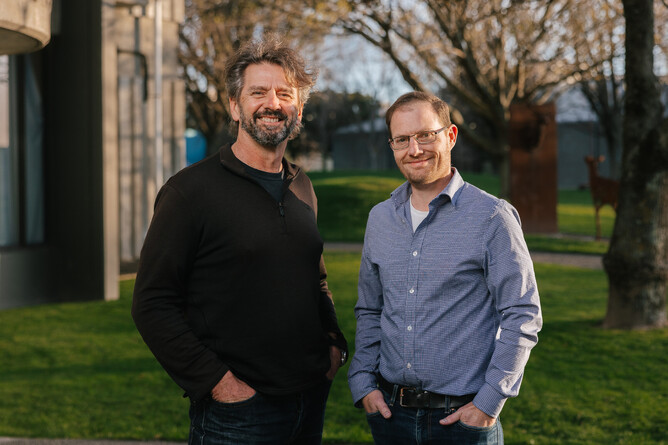A good pasture can look healthy from the top, yet the real story is happening out of sight, keeping farmers and growers quite literally in the dark. For Rhize Analytics, the mission began with the frustrating reality of not knowing what was happening below ground. Rural professionals, farmers and researchers know roots drive production, crop resilience, and environmental performance, but they have struggled to measure what’s happening below ground quickly and reliably.
Meet the founders of Rhize Analytics, one of the ventures participating in the Sprout Accelerator Spring25 Cohort. Warren King and Steve Cantwell lead a team from the Bioeconomy Science Institute, who collectively bring a vast range of scientific capabilities to the team. Warren brings domain expertise in plants and an eye for New Zealand’s pastoral systems and the climate pressure they are under. Steve brings a background in Cognitive Psychology, Computer Science, and building hardware robust enough for paddocks. They’re well supported by their team, Tracy Dale, Katherine Toer, and Sam Hitchman, all scientists within the Bioeconomy Science Institute. Together, the Rhize Analytics team is well-positioned to make the subterranean world more visible.
The spark for their venture came when a costly rhizotron, hardware used to observe plant roots over time, was damaged. Upon closer inspection, the damage turned out to be a result of poor design and, luckily enough, a simple fix. Traditional rhizotron systems are expensive and outdated, with single units alone costing over USD $20,000, and full setups can be up to $70,000, all while lacking robust analysis software. That moment, and the cost analysis, prompted the team to speak with technicians and scientists who utilise the root images captured by the rhizotron. They discovered that image capture wasn’t the bottleneck in the technology, the manual image processing was. The Rhize Analytics team set out to automate this process, reducing analysis time from hours to milliseconds and, in the process, providing timely, cost-effective, and practical insights into root activity to guide decisions on irrigation, fertiliser input, and grazing across pastural, horticultural, and arable systems.
The team’s journey so far has generated strong interest from farmers and growers, revealing during their market research, that when roots become visible in the data, conversations about productivity shifted. Insights like this have sharpened their mission to make underground agronomy as visible and useful as a pasture walk above ground, so that those on the ground can adapt faster to factors associated with climate and market pressure.
Now, as part of the Sprout Accelerator’s Spring25 Cohort, Rhize Analytics is focused on a clear next milestone: hone the most valuable image-derived metrics and train models on expertly hand-traced datasets to lift accuracy where it counts. They’re looking to Sprout for rapid mentor feedback, sharper commercial thinking, and introductions to early adopters who want decisions, not just data.

